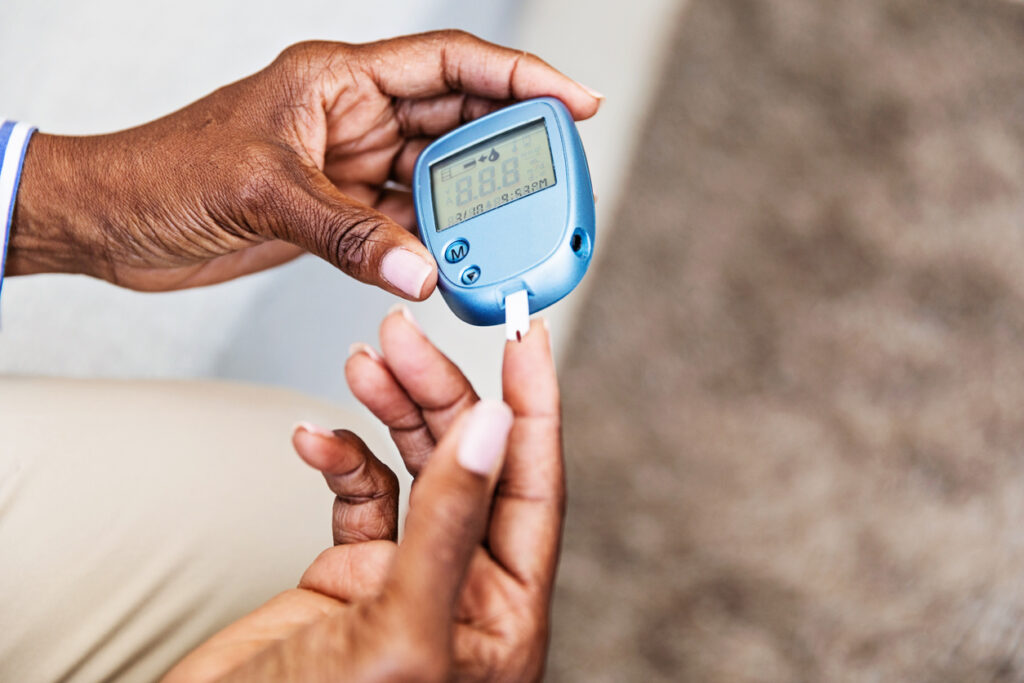Good health is the starting point of a happy and fulfilling life. We all strive to live healthy lifestyles by eating nutritious foods, exercising regularly, and maintaining good mental health. However, despite our best efforts, many of us face health challenges throughout our lives. One such challenge is diabetes, a chronic condition that affects millions of people worldwide. Diabetes is a health condition that arises when the body is unable to produce or use insulin properly, resulting in high levels of glucose in the blood. This article will explore the two main forms of diabetes, namely, type 1 and type 2, their causes, symptoms, treatments, and the importance of managing this condition for long-term health and well-being.
Type 1 Diabetes:
 Type 1 diabetes is an autoimmune condition that occurs when the body’s immune system assaults and destroys the cells in the pancreas that are responsible for the production of insulin. Insulin is an essential hormone that helps your body turn food into energy and controls the blood sugar levels in the body. When these cells are destroyed, the body is unable to produce insulin, resulting in high levels of glucose in the blood.
Type 1 diabetes is an autoimmune condition that occurs when the body’s immune system assaults and destroys the cells in the pancreas that are responsible for the production of insulin. Insulin is an essential hormone that helps your body turn food into energy and controls the blood sugar levels in the body. When these cells are destroyed, the body is unable to produce insulin, resulting in high levels of glucose in the blood.
Type 1 diabetes is usually diagnosed in children and young adults, but it can occur at any age. The accurate cause of this type of diabetes is unknown, but it is believed by many to be a combination of genetic and environmental factors.
Symptoms of type 1 diabetes usually include weight loss, increased thirst, frequent urination, hunger, blurred vision and fatigueIf left untreated, type 1 diabetes can lead to serious health problems such as nerve damage, kidney damage, and eye damage.
Treatment for this type of diabetes involves insulin therapy, which replaces the missing insulin in the body. Insulin can be administered through injections or an insulin pump. A healthy diet and regular exercise are also important for managing blood sugar levels in individuals with type 1 diabetes.
Type 2 Diabetes:
 Type 2 diabetes is the most common type of diabetes, as it accounts for approximately 90% of all cases. It happens when the body becomes resistant to insulin or is unable to produce enough insulin to regulate blood sugar levels. Type 2 diabetes is often linked with lifestyle factors such as obesity, lack of exercise, and poor diet.
Type 2 diabetes is the most common type of diabetes, as it accounts for approximately 90% of all cases. It happens when the body becomes resistant to insulin or is unable to produce enough insulin to regulate blood sugar levels. Type 2 diabetes is often linked with lifestyle factors such as obesity, lack of exercise, and poor diet.
Symptoms of type 2 diabetes usually include increased thirst, frequent urination, hunger, fatigue, and blurred vision. If left untreated, type 2 diabetes can lead to serious health complications such as eye damage, kidney damage, and nerve damage.
Treatment for type 2 diabetes involves lifestyle changes such as a more balanced diet, regular exercise, and weight loss. In some cases, medication may also be prescribed to help regulate blood sugar levels. In severe cases, insulin therapy may be necessary.
Prevention of Diabetes:
 While type 1 diabetes cannot be prevented, type 2 diabetes can be either be delayed or prevented through lifestyle modifications. Some tips to prevent or delay type 2 diabetes include:
While type 1 diabetes cannot be prevented, type 2 diabetes can be either be delayed or prevented through lifestyle modifications. Some tips to prevent or delay type 2 diabetes include:
- Healthy Eating: Eating a balanced and healthy diet is essential to prevent or delay the onset of diabetes. This means eating lots of veggies, fruits, whole grains, healthy fats while limiting processed, lean proteins and high-sugar foods to at least 150 minutes of moderate aerobic exercise a week, along with muscle-strengthening activities at least 2-3 days per week.
- Weight Management: Maintaining a healthy weight can significantly reduce the risk of developing type 2 diabetes. Losing even a small amount of weight can have significant health benefits.
- Avoiding Smoking and Limiting Alcohol: Both smoking and excessive alcohol consumption increase the risk of developing diabetes. Avoid smoking and limit alcohol to no more than two drinks per day for men and one drink per day for women
- Regular Check-ups: Regular health check-ups, including blood glucose tests, can help identify early signs of diabetes and allow for timely treatment.
Conclusion:
Diabetes is a chronic disease that affects more than millions of people worldwide. It is therefore important to understand the differences between type 1 and type 2 diabetes, their causes, symptoms, treatment options, and preventative measures. By maintaining a healthy lifestyle and working closely with healthcare professionals, individuals with diabetes can successfully manage their condition and reduce their risk of serious health complications.


